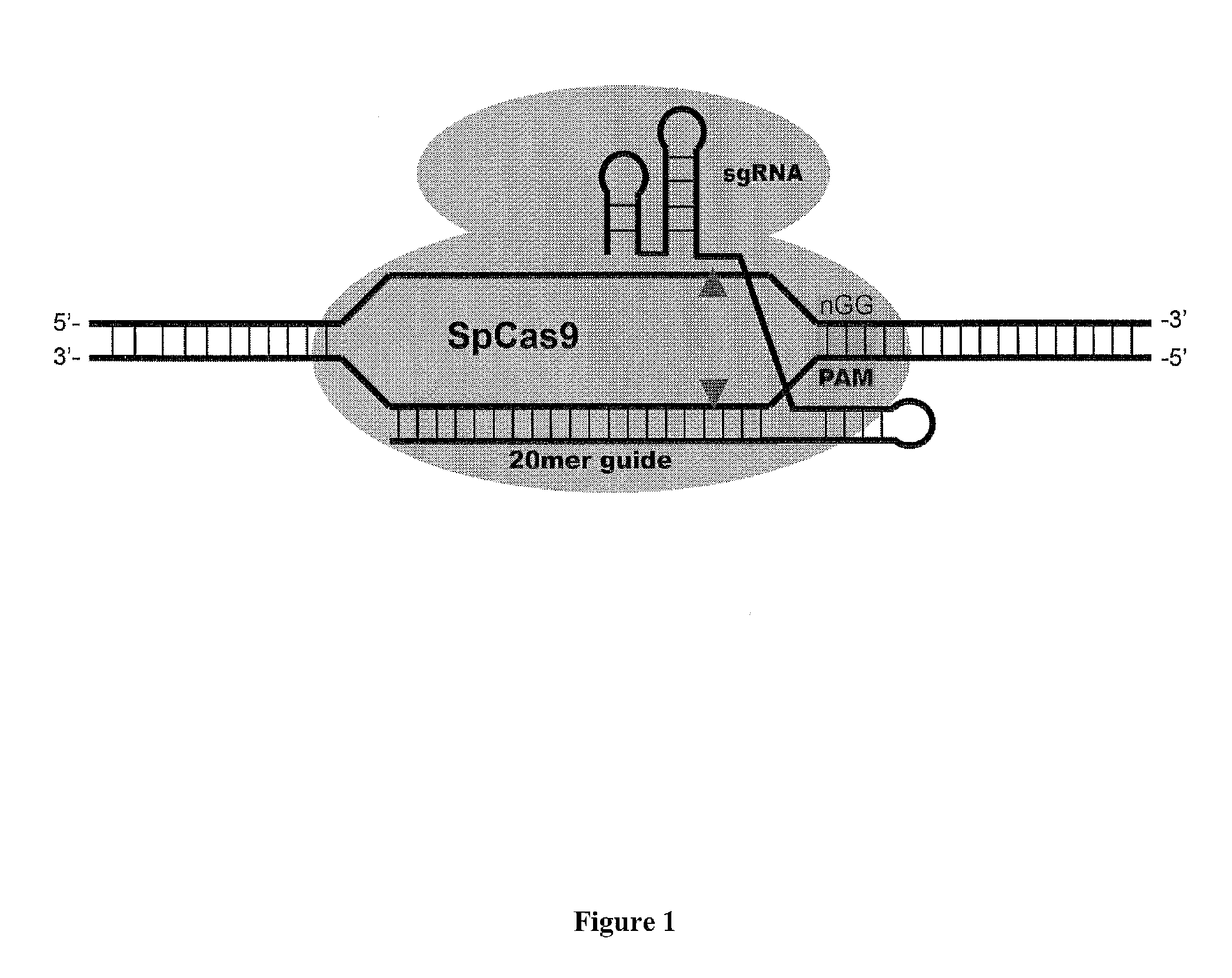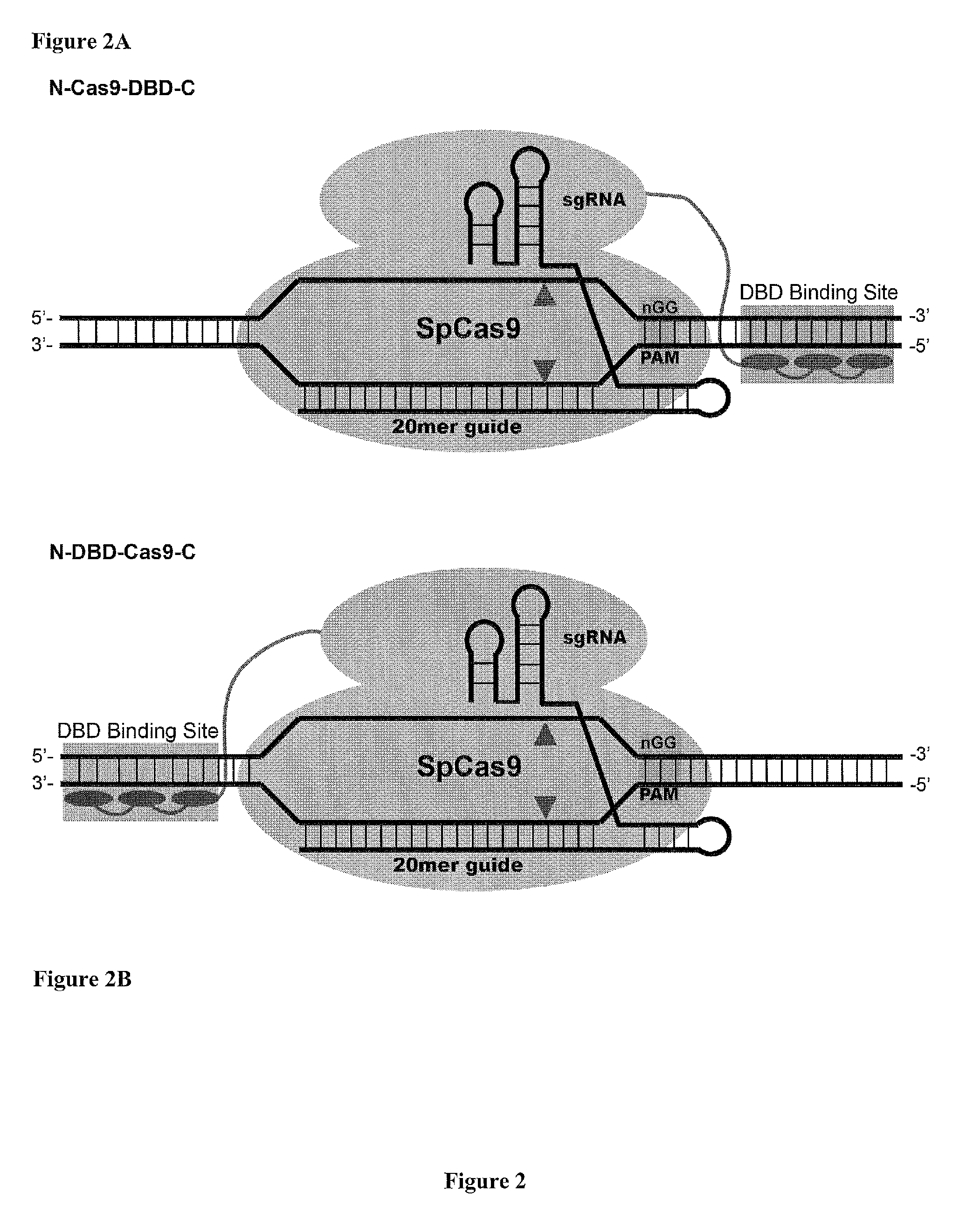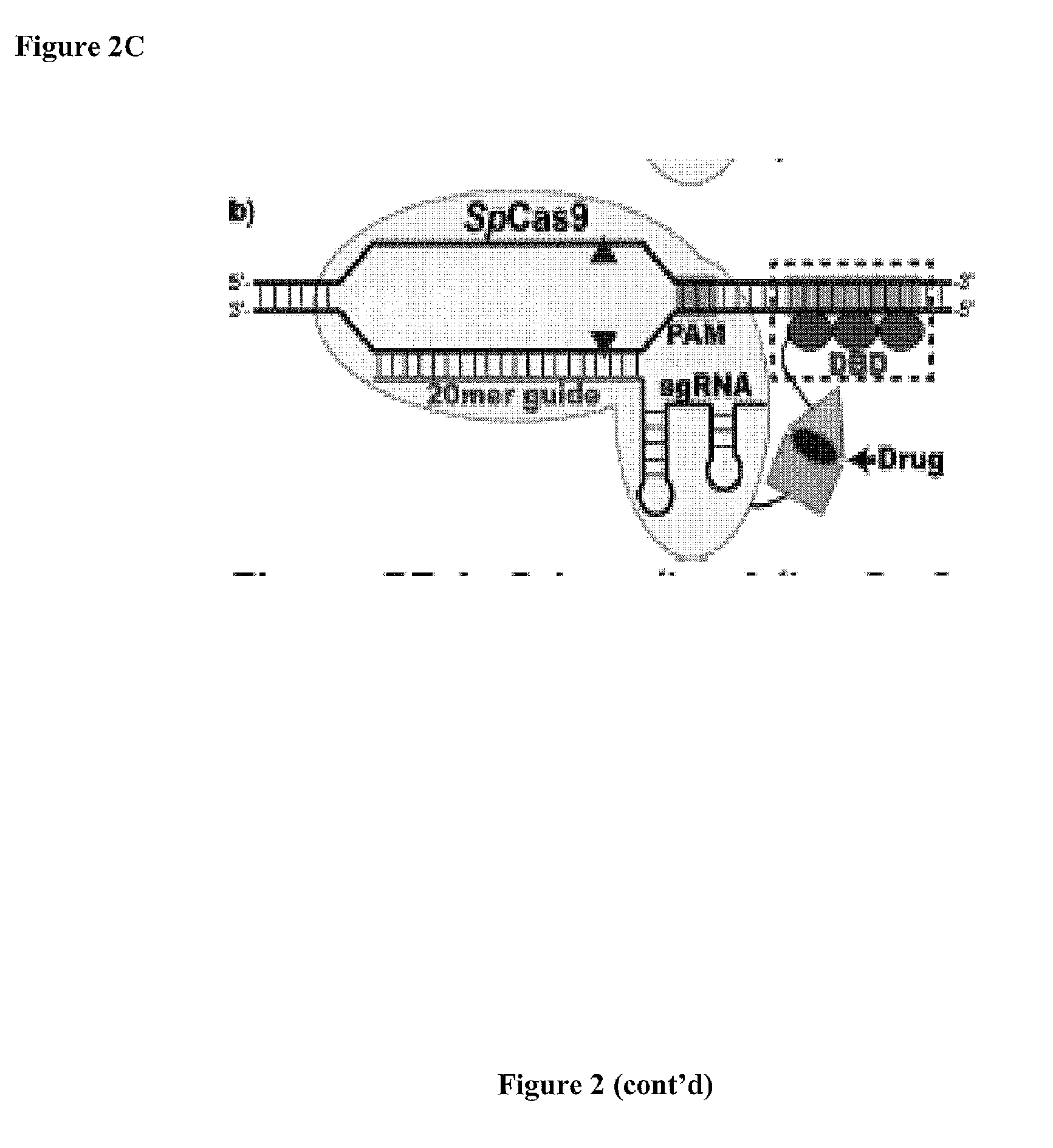Cas9-DNA Targeting Unit Chimeras
a chimera and dna technology, applied in the field of genetic engineering, can solve the problems of unintended target sites and degree of imprecision, and achieve the effects of improving the diversity of sequences, and improving the precision of cleavag
- Summary
- Abstract
- Description
- Claims
- Application Information
AI Technical Summary
Benefits of technology
Problems solved by technology
Method used
Image
Examples
example 1
Plasmid Constructs
[0441]For Cas9-DBD experiments an sgRNA expression plasmid pLKO1-puro was used as described previously. Stewart et al., Lentivirus-delivered stable gene silencing by RNAi in primary cells. RNA. 2003 April; 9(4):493-501. SpCas9 and SpCas9-DBD fusions are expressed from pCS2-Dest gateway plasmid under chicken beta globin promoter. Villefranc et al., Gateway compatible vectors for analysis of gene function in the zebrafish. Dev Dyn. 2007 November; 236(11):3077-87. For SSA directed nuclease activity assay, an M427 plasmid was used as previously reported. Wilson et al., Design and Development of Artificial Zinc Finger Transcription Factors and Zinc Finger Nucleases to the hTERT Locus. Mol Ther Nucleic Acids. 2013 Apr. 23; 2:e87.
[0442]Cas9-DBD target sites are cloned into Sbf1 digested backbone in ligation-independently. The Sbf1 digested M427 vector backbone may be treated with T4 DNA polymerase to recess the ends. Small double stranded oligonucleotides with flanking en...
example ii
Cell Culture and Transfection
[0446]Human Embryonic Kidney (HEK293T) cells were cultured in high glucose DMEM with 10% FBS and 1% Penicillin / Streptomycin (Gibco) at 37° C. incubator with 5% CO2. For transient transfection, early to mid-passage cells (passage number 5-25) were used. Approximately 1.6×105 cells were transfected with 50 ng SpCas9 / DBD expressing plasmid, 50 ng sgRNA expressing plasmid, 100 ng mCherry plasmid via Polyfect transfection reagent (Qiagen) in 24-well format according to manufacturer suggested protocol. For SSA-reporter assay, 150 ng M427 SSA-reporter plasmid may be also supplemented to the co-transfection mix.
example iii
Western Blot Analysis
[0447]HEK293T cells are transfected with 500 ng Cas9 and 500 ng sgRNA expressing plasmid in a 6-well plate by Lipofectamine 3000 transfection reagent (Invitrogen) according to manufacturer's suggested protocol. 48 hours after transfection, cells are harvested and lysed with 100 ul RIPA buffer. 8 μl of cell lysate is used for electrophoresis and blotting. The blots are probed with anti-HA (Sigma #H9658) and anti alpha-tubilin (Sigma #T6074) primary antibodies; then HRP conjugated anti-mouse IgG (Abcam #ab6808) and anti-rabbit IgG secondary antibodies, respectively. Visualization employed Immobilon Western Chemiluminescent HRP substrate (EMD Millipore #WBKLS0100).
PUM
| Property | Measurement | Unit |
|---|---|---|
| acid | aaaaa | aaaaa |
Abstract
Description
Claims
Application Information
 Login to View More
Login to View More - R&D
- Intellectual Property
- Life Sciences
- Materials
- Tech Scout
- Unparalleled Data Quality
- Higher Quality Content
- 60% Fewer Hallucinations
Browse by: Latest US Patents, China's latest patents, Technical Efficacy Thesaurus, Application Domain, Technology Topic, Popular Technical Reports.
© 2025 PatSnap. All rights reserved.Legal|Privacy policy|Modern Slavery Act Transparency Statement|Sitemap|About US| Contact US: help@patsnap.com



